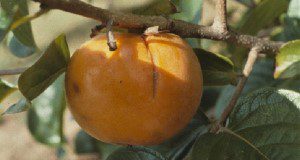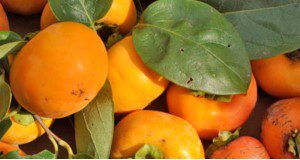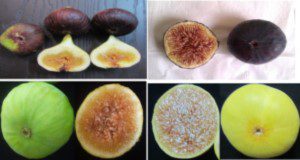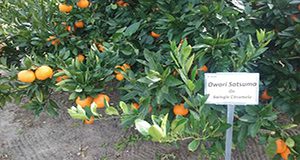Los caquis son considerados como un cultivo relativamente sostenible en Florida, con una calificación de 6 puntos en una escala de 10 para la evaluación de sostenibilidad agrícola. Los caquis tienen un potencial comercial moderado y altas probabilidades de llegar directamente al consumidor. La demanda de los consumidores podría ser de cultivares no astringentes principalmente. Los caquis son aptos para el centro y el norte de Florida, ya que la calidad y los rendimientos pueden ser bajos en la parte sur del estado.
This new 15-page publication of the UF/IFAS Horticultural Sciences Department is the Spanish translation of HS1389, Japanese Persimmon Cultural Practices in Florida, written by Ali Sarkhosh, Dustin M. Huff, and Peter C. Andersen, and translated by Jonathan Clavijo-Herrera.
https://edis.ifas.ufl.edu/hs1401
Tag: Peter C. Andersen
Japanese Persimmon Cultural Practices in Florida
Persimmons are considered a relatively sustainable crop in Florida, rated as a 6 out of 10 on an assessment of agricultural sustainability, with a moderate commercial potential and high direct-to-consumer potential. Trees grow and fruit best in central and northern Florida and can produce high yields of good-quality fruit. This new 13-page publication of the UF/IFAS Horticultural Sciences Department describes how to propagate and establish persimmons in Florida, while also providing information on irrigation, fertilization, harvest, pests, diseases, and more. Written by Ali Sarkhosh, Dustin M. Huff, and Peter C. Andersen.
https://edis.ifas.ufl.edu/hs1389
Cultivares de Caqui Japonés en Florida
El caqui japonés, Diospyros kaki L., es originario de China y fue cultivado por primera vez en Florida en el año 1870. El número de fincas productoras de caqui en Florida ha aumentado de 164 a 227 durante el período 2012-2017, haciendo mayor hincapié en la naturaleza de pequeña escala de la superficie promedio de fincas en esta industria. Los árboles crecen y fructifican mejor en el centro y norte de Florida, y pueden producir altos rendimientos de fruta de buena calidad. En el sur de Florida, la calidad de los frutos de tipo astringentes es mejor que la de los de tipo no astringentes.
This new 12-page article is the Spanish translation of SP101/MG242, Japanese Persimmon Cultivars in Florida. Written by Ali Sarkhosh, Peter C. Andersen, and Dustin Huff; translated by Jonathan Clavijo Herrera; and published by the UF/IFAS Horticultural Sciences Department.
https://edis.ifas.ufl.edu/mg460
El higo
El higo (Ficus carica L; familia Moracea) se originó en los trópicos del Viejo Mundo: Asia Menor y la Región Mediterránea. En el Mediterráneo, el higo se ha cultivado desde el año 5,000 a.C. Muchos cultivares de higos fueron importados del Viejo Mundo en los últimos 50 años. Actualmente, sin embargo, no hay programas de mejoramiento de higos en los Estados Unidos, y de entre al menos 60-100 cultivares de higos nombrados, relativamente pocos se cultivan en el sureste de los Estados Unidos.
This is the Spanish version of HS27, The Fig. (https://edis.ifas.ufl.edu/mg214). Written by Ali Sarkhosh and Peter C. Andersen, translated by Luis Jonathan Clavijo Herrera, and published by the UF/IFAS Horticultural Sciences Department.
https://edis.ifas.ufl.edu/mg459
Japanese Persimmon Varieties in Florida
Japanese persimmons were first grown in Florida in the 1870s, but as of 2017, most US plantings are on a small scale; however, even as the overall acreage has decreased, the number of farms in Florida growing the fruit increased from 2012 to 2017. Trees grow and fruit best in central and northern Florida and can produce high yields of good-quality fruit. With an estimated population of more than 21 million, a diverse cultural base, and large cities close to production zones, Florida is primed for a larger persimmon industry. This 11-page revision provides growers with a primer on persimmon characteristics, marketing, and cultivars. Written by Ali Sarkhosh, Peter C. Andersen, and Dustin M. Huff, and published by the UF/IFAS Horticultural Sciences Department.
https://edis.ifas.ufl.edu/mg242
Satsuma Mandarin Budget and Profitability Analysis for North Florida
This 16-page analysis written by Kevin R. Athearn, Peter C. Andersen, Bent V. Brodbeck, Lei Lani L. Davis, Clay Olson, Daniel K. Fenneman, Matthew Lollar, Derek Farnsworth, and Michael Perez and published by the UF/IFAS Food and Resource Economics Department provides research-based information and a description of satsuma mandarin markets, production costs, and potential returns for citrus growers who are considering establishing a satsuma grove in north Florida. Its purpose is to serve as a reference and model for growers to create their own enterprise budgets and make financial projections. An enterprise budget estimates revenues, costs, and net returns for a particular crop or farm enterprise to help growers assess the economic viability and risk of an enterprise, compare enterprises, and evaluate production or marketing changes. The budget and financial analysis may assist prospective and current satsuma growers, agricultural consultants, and lenders with planning and decision making.
http://edis.ifas.ufl.edu/fe1030
Guide to Olive Tree Nutrition in Florida
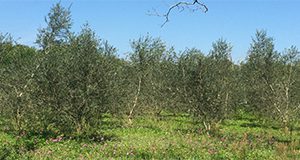 A burgeoning olive industry already exists in the southeastern United States, but research and Extension information regarding olive fertilization recommendations in Florida is limited. While there are data and recommendations for olive from the University of California, the University of Georgia (UGA), and other institutions around the world, there are no data from which we can derive Florida-specific recommendations. This 6-page fact sheet uses many of the existing recommendations for mature, high-density, and traditional grove spacing as guidelines until data specific to Florida production are generated. It discusses leaf tissue sampling procedures, leaf tissue sufficiency ranges, nitrogen fertility, phosphorus and potassium fertility, boron, concerns for olive production in Florida, and other resources for olive production in the state. Written by Michael J. Mulvaney, Rao Mylavarapu, Peter C. Andersen, Mack Thetford, and Jennifer L. Gillett-Kaufman, and published by the UF Agronomy Department, May 2016.
A burgeoning olive industry already exists in the southeastern United States, but research and Extension information regarding olive fertilization recommendations in Florida is limited. While there are data and recommendations for olive from the University of California, the University of Georgia (UGA), and other institutions around the world, there are no data from which we can derive Florida-specific recommendations. This 6-page fact sheet uses many of the existing recommendations for mature, high-density, and traditional grove spacing as guidelines until data specific to Florida production are generated. It discusses leaf tissue sampling procedures, leaf tissue sufficiency ranges, nitrogen fertility, phosphorus and potassium fertility, boron, concerns for olive production in Florida, and other resources for olive production in the state. Written by Michael J. Mulvaney, Rao Mylavarapu, Peter C. Andersen, Mack Thetford, and Jennifer L. Gillett-Kaufman, and published by the UF Agronomy Department, May 2016.
http://edis.ifas.ufl.edu/ag405
